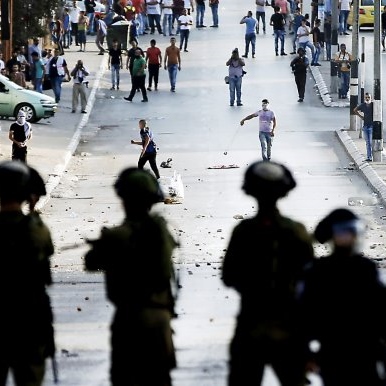
News

Israel’s image in the world media
PAULA SLIER
If there is one question I am most often asked, as a journalist, it is why Israel gets such bad press. It’s a question I find very difficult to answer.
Beit El is an Israeli settlement 20 km north of Jerusalem. It borders the Palestinian city of Ramallah. Some scholars suggest this is where Jacob dreamt of angels ascending and descending a ladder that reached into Heaven. It is said to be the place where G-d told Jacob that the nations of the world would be blessed through his family.
If you visit Beit El, there is an open piece of ground next to a huge wormwood tree, the oldest of its kind in Israel, called “Jacob’s Rock”. If you keep on driving along the main road, an IDF watchtower and barbed wire quickly bring you back to modern-day reality and the ongoing conflict between settlers on the one side of the security wall and their Palestinian neighbours on the other.
The first time I visited the Beit El crossing, it was Friday lunchtime and weekly protests between Palestinian youngsters and Israeli soldiers had just started. It was soon to become routine.
We showed our press credentials to a bored IDF tank commander who waved us through. He and some soldiers were drinking bottled water and asked us if we wanted some. The cameraman walked through first. I followed, tweeting and wondering when would be the right time to put on the bulletproof helmet I was holding.
The dirt road had the imprints of tank tracks and as we rounded a few concrete barriers, a Palestinian house on the left rose to meet us. Bored Palestinians watched us as we walked. In less than three minutes we had crossed into Ramallah. Soon we turned a corner and came face to face with Palestinian anger fused with Molotov cocktails and huge rocks. The helmet went on. I felt very exposed.
A few Israeli tanks suddenly appeared from behind us and in a quick, practiced fashion, soldiers jumped out, took up position next to one another and started firing teargas canisters at the several dozen, mostly young, protesters some few hundred metres down the road.
The only thing that separated the two sides was distance and a rubbish bin that had been set alight. There was a resigned casualness among the soldiers; they knew the drill. A few shouted for me and my cameraman to move back.
Others, through a megaphone, demanded in Hebrew that the protesters stop. When they didn’t stop and, instead, when a few protesters appeared on a nearby hillside, the soldiers (many of whom were women) aimed their teargas canisters at them.
Big rocks, with jagged edges, torn off the pavements lining the road, were thundering their way towards us. If they hit you on the head, they could be deadly.
And then as suddenly as they appeared, the soldiers got back into their tanks and drove back down the road we had walked up. It was like witnessing a drama with no ending. They’d be back again within 20 minutes…
I had a clear sign on me saying “press” but because it’s unusual for foreign journalists to cover a protest from among the soldiers, it wasn’t safe for us to be there.
Slowly my cameraman and I manoeuvred our way to the far left side of the field and – although some rocks were still falling at our feet – we gradually managed to join the protesters. Now we were clearly on their side.
Here, there was a lot of shouting and passing around of Molotov cocktails and rocks. There were some women, but they were huddled into little groups further back. The burning rubbish bin was a great protector and from behind it massive rocks were being hurled into the distance.
Most of the crowd was concentrated here, but off to the sides some lonesome youngsters, using slingshots to aim big rocks at the soldiers, were moving forward in the grass.
Everyone was wearing a scarf to cover his or her face against the sting of the teargas. There were bottles of water being handed around to help those who had been struck.
It felt like being in a sea of big waves and as new teargas hit us, we’d all bend and duck and then after the soldiers retreated, we’d surge forward, only to run backwards a short time later.
It was hard to see, breathe and speak with a teargas mask on and it can get quite stuffy. As luck would have it, a teargas canister landed right next to me as I was looking, mask off, in the other direction.
People started running and I heard the cameraman shouting, and immediately started gasping for air while frantically surging forward with the crowd. The tears were streaming down my face and as I ran, the gas followed.
Eventually I managed to take cover in a side alleyway. A few slow, painful, minutes passed before my breathing returned to normal. Children were passing me bits of cloth to breathe into.
It’s no fun being caught in a demonstration. The world might be quick to decide who’s right and wrong, but they forget it is dangerous on both sides. The images one sees in the media never properly capture the fear, frustration, anger and helplessness one feels – regardless of where you’re standing.
Paula Slier is the Middle East Bureau Chief of RT, the founder and CEO of NewshoundMedia and the inaugural winner of the Europcar Woman in Leadership Award of the South African Absa Jewish Achievers.




